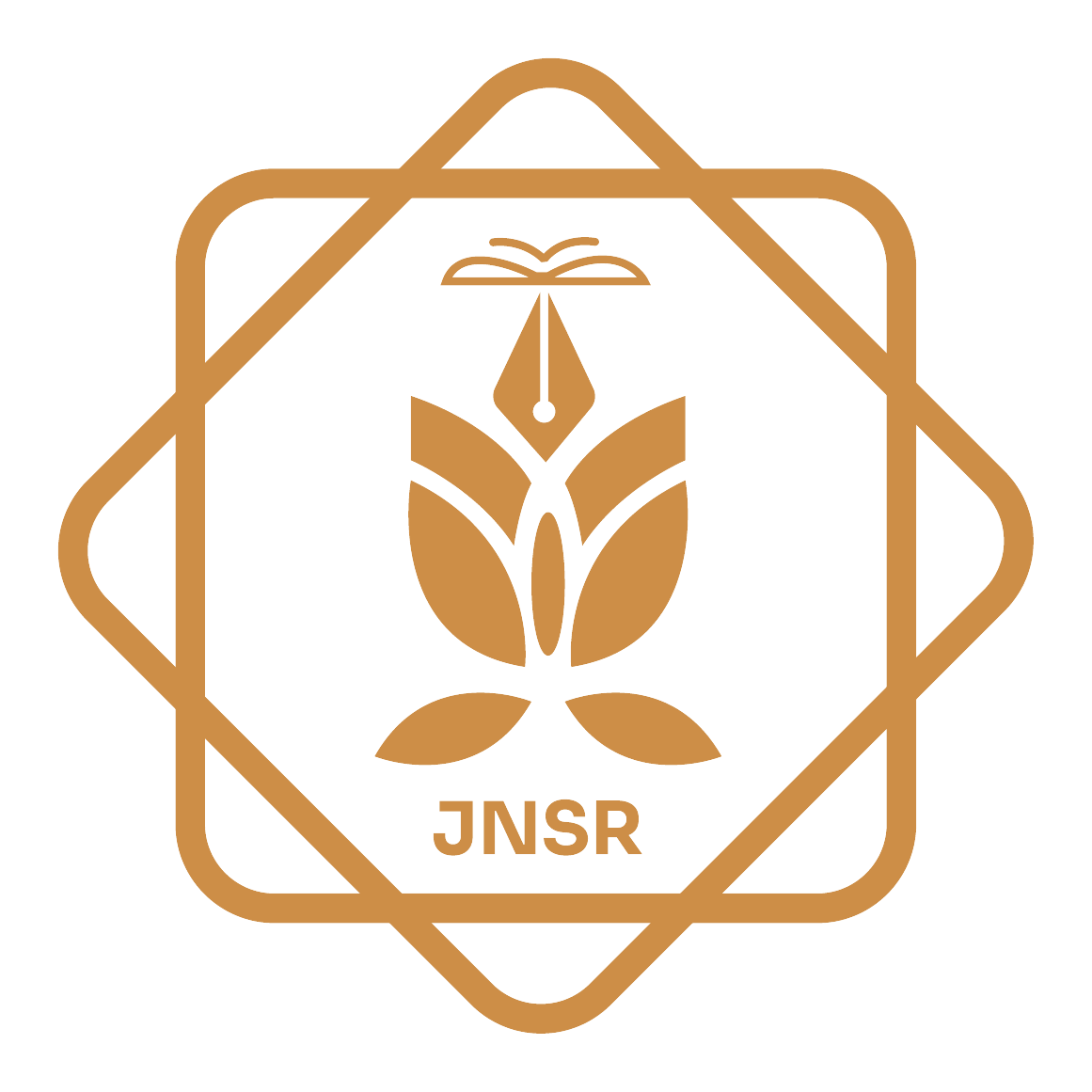Effects of Climate Change on Animal Production
DOI:
https://doi.org/10.62810/jnsr.v2i2.30Keywords:
Climate change, Farm animals, Productivity, Reproductive performanceAbstract
This paper examines the impact of global warming on animal production worldwide. The accumulation of greenhouse gases (GHGs) in the atmosphere is causing changes in extreme weather patterns and consequent climate variations, substantially affecting crop and animal production. Climate change is altering the meadows and pastures that serve as the primary feed sources for animal husbandry, leading to production losses and threatening the sustainability of this sector. A holistic approach is proposed to mitigate the adverse effects of heat stress on animal production. This involves identifying gene regions resistant to heat stress through breeding studies, improving the physical environment by modifying diets, and enhancing the genetic resilience of animals to climate change. Understanding the adaptation mechanisms of these genes will be crucial for future selection programs, enabling breeding animals better suited to the emerging environments resulting from climate change. Selection and breeding of climate-tolerant animals that can survive and reproduce under extreme conditions will ensure their contribution to future generations. Furthermore, responsible practices throughout the production and consumption chain are necessary to preserve a habitable environment for upcoming generations. The solution lies in a multi-pronged strategy that combines genetic research, environmental improvements, responsible practices, and sustainable animal husbandry to combat the challenges posed by global warming and ensure the long-term viability of animal production.
Downloads
References
Ammer, S., Lambertz, C., Von Soosten, D., Zimmer, K., Meyer, U., Dänicke, S., & Gauly, M. (2018). Impact of diet composition and temperature–humidity index on water and dry matter intake of high‐yielding dairy cows. Journal of animal physiology and animal nutrition, 102(1), 103-113. https://doi.org/10.1111/jpn.12664 DOI: https://doi.org/10.1111/jpn.12664
Al-Katanani, Y. M., Webb, D. W., & Hansen, P. J. (1999). Factors affecting seasonal variation in 90-day nonreturn rate to first service in lactating Holstein cows in a hot climate. Journal of Dairy Science, 82(12): 2611-2616. https://doi.org/10.3168/jds.S0022-0302(99)75516-5 DOI: https://doi.org/10.3168/jds.S0022-0302(99)75516-5
Badinga, L., Thatcher, W. W., Diaz, T., Drost, M., & Wolfeson, D. (1993). Effect of environmental heat stress on follicular development and steroidogenesis in lactating Holstein cows. Theriogenology, 39(4), 797-810. https://doi.org/10.1016/0093-691x(93)90419-6 DOI: https://doi.org/10.1016/0093-691X(93)90419-6
Cheng, M., McCarl, B., & Fei, C. (2022). Climate change and livestock production: a literature review. Atmosphere, 13(1), 140. https://doi.org/10.3390/atmos13010140 DOI: https://doi.org/10.3390/atmos13010140
Climate Change and Livestock Production. from the Food and Agriculture Organization (FAO, 2013): http://www.fao.org/3/i3253e/i3253e.pdf
Dutt, R. H. (1963). Critical period for early embryo mortality in ewes exposed to high ambient temperature. Journal of Animal Science, 22(3), 713-719. https://doi.org/10.2527/jas1963.223713x DOI: https://doi.org/10.2527/jas1963.223713x
ESCAP, (2012). The impact of climate change on the agricultural sector: implications of the agro‐industry for low carbon, green growth strategy and roadmap for the East Asian Region. https://repository.unescap.org/handle/20.500.12870/4032 (Access on: 20 November 2023) FAO (2009). The state of food and agriculture, Rome, Italy http://www.fao.org/docrep/012/i0680e/i0680e.pdf
Folkedal, O., et al. (2012). "Duration of effects of acute environmental changes on food anticipatory behavior, feed intake, oxygen consumption, and cortisol release in Atlantic salmon parr." Physiology & behavior 105(2): 283-291. https://doi.org/10.1016/j.physbeh.2011.07.015 DOI: https://doi.org/10.1016/j.physbeh.2011.07.015
Gaughan, J., & Cawdell-Smith, A. J. (2015). Impact of climate change on livestock production and reproduction. Climate change Impact on livestock: adaptation and mitigation, 51-60. https://doi.org/10.1007/978-81-322-2265-1_4 DOI: https://doi.org/10.1007/978-81-322-2265-1_4
Hafez, E. S. E., & Hafez, B. (Eds.). (2013). Reproduction in farm animals change: impact of livestock on climate and mitigation strategies. John Wiley & Sons. Livestock and climate, Animal Frontiers, 9(1), 69-76. https://search.worldcat.org/title/1048363044 DOI: https://doi.org/10.1093/af/vfy034
Hansen, P. J. (2018). Cellular and molecular basis of therapies to ameliorate effects of heat stress on embryonic development in cattle. Animal Reproduction (AR), 10(3), 322-333. https://www.researchgate.net/publication/285751414_Cellular_and_molecular_basis_of_therapies_to_ameliorate_effects_of_heat_stress_on_embryonic_development_in_cattle
Hansen, P. J., Drost, M., Rivera, R. M., Paula-Lopes, F. F., Al-Katanani, Y. M., Krininger III, C. E., & Chase Jr, C. C. (2001). Adverse impact of heat stress on embryo production: causes and strategies for mitigation. Theriogenology, 55(1), 91-103. https://doi.org/10.1016/S0093-691X(00)00448-9 DOI: https://doi.org/10.1016/S0093-691X(00)00448-9
Rutledge, J. J., Monson, R. L., Northey, D. L., & Leibfried-Rutledge, M. L. (1999). High environmental temperature and humidity decrease oocyte quality in Bos taurus but not in Bos taurus cows. Theriogenology, 49(3), 657-665. https://doi.org/10.1016/s0093-691x(98)00016-8
Kasimanickam, R., & Kasimanickam, V. (2021). Impact of heat stress on embryonic development during first 16 days of gestation in dairy cows. Scientific reports, 11(1), 14839. https://doi.org/10.1038/s41598-021-94278-2 DOI: https://doi.org/10.1038/s41598-021-94278-2
Lacetera, N., Bernabucci, U., Ronchi, B., & Nardone, A. (2003). Physiological and productive consequences of heat stress. The case of dairy ruminants. Interaction between climate and animal production, 45-59. DOI: https://doi.org/10.3920/9789086865178_005 DOI: https://doi.org/10.3920/9789086865178_005
Liu, J., Li, L., Chen, X., Lu, Y., & Wang, D. (2019). Effects of heat stress on body temperature, milk production, and reproduction in dairy cows: A novel idea for monitoring and evaluation of heat stress—A review. Asian Australasian journal of animal sciences, 32(9), 1332. https://doi.org/10.5713/ajas.18.0743
Llonch, P., Haskell, M. J., Dewhurst, R. J., & Turner, S. P. (2017). Current available strategies to mitigate greenhouse gas emissions in livestock systems: an animal welfare perspective. Animal, 11(2), 274-284. https://doi.org/10.1017/S1751731116001440 DOI: https://doi.org/10.1017/S1751731116001440
McMichael, A. J. (2013). "Globalization, climate change, and human health." New England Journal of Medicine 368(14): 1335-1343. DOI: 10.1056/NEJMra1109341 DOI: https://doi.org/10.1056/NEJMra1109341
Mihm, M., Curran, N., Hyttel, P., Knight, P. G., Boland, M. P., & Roche, J. F. (1999). Effect of dominant follicle persistence on follicular fluid oestradiol and inhibin and on oocyte maturation in heifers. Reproduction, 116(2), 293-304. https://doi.org/10.1530/jrf.0.1160293 DOI: https://doi.org/10.1530/jrf.0.1160293
Nardone, A., Ronchi, B., Lacetera, N., Ranieri, M. S., & Bernabucci, U. (2010). Effects of climate changes on animal production and sustainability of livestock systems. Livestock Science, 130(1-3), 57-69. https://doi.org/10.1016/j.livsci.2010.02.011 DOI: https://doi.org/10.1016/j.livsci.2010.02.011
Oyhantçabal, W., Vitale, E., & Lagarmilla, P. (2010). Climate change and links to animal diseases and animal production. Compendium of technical items presented to the OIE World Assembly of Delegates and to OIE Regional Commissions, 169-186. https://citeseerx.ist.psu.edu/document?repid=rep1&type=pdf&doi=038be307923e6822316f0fd786b9e0829076924a
Pilling, D., & Hoffmann, I. (2011). Physiological and metabolic systems important to animal growth: an overview. Journal of Animal Science, 61(suppl_2), 1-20. https://doi.org/10.1093/ansci/61. DOI: https://doi.org/10.1093/ansci/61.Supplement_2.1
Pilling, D., & Hoffmann, I. (2011). Climate change and animal genetic resources for food and agriculture: state of knowledge, risks and opportunities. FAO CGRFA Background Study Paper, 53, 28. https://doi.org/10.13140/2.1.2475.7444
Rocha, A., Randel, R. D., Broussard, J. R., Lim, J. M., Blair, R. M., Roussel, J. D. & Hansel, W. (1998). High environmental temperature and humidity decrease oocyte quality in Bostaurus
but not in Bostaurus cows. Theriogenology, 51(1), 330. https://doi.org/10.1016/S0093-691X(98)00016-8 DOI: https://doi.org/10.1016/S0093-691X(98)00016-8
Rojas-Downing, M. M., et al. (2017). "Climate change and livestock: Impacts, adaptation, and mitigation." Climate risk management 16: 145-163. https://doi.org/10.1016/j.crm.2017.02.001
Rojas-Downing, M. M., Nejadhashemi, A. P., Harrigan, T., & Woznicki, S. A. (2017). Climate change and livestock: Impacts, adaptation, and mitigation. Climate risk management, 16, 145-163. https://doi.org/10.1016/j.crm.2017.02.001 DOI: https://doi.org/10.1016/j.crm.2017.02.001
Sejian, V., Maurya, V. P., & Naqvi, S. M. (2010). Adaptive capability as indicated by endocrine and biochemical responses of Malpura ewes subjected to combined stresses (thermal and nutritional) in a semi-arid tropical environment. International journal of biometeorology, 54, 653-661. https://doi.org/10.1007/s00484-010-0341 DOI: https://doi.org/10.1007/s00484-010-0341-1
Sejian, V., Maurya, V. P., & Naqvi, S. M. K. (2011). Effect of thermal, nutritional and combined (thermal and nutritional) stresses on growth and reproductive performance of Malpura ewes under semi-arid tropical environment. Journal of animal physiology and animal nutrition, 95, 252-258. DOI: https://doi.org/10.1111/j.1439-0396.2010.01048.x
Sejian, V., Maurya, V. P., Kumar, K., & Naqvi, S. M. K. (2012). Effect of multiple stresses (thermal, nutritional, and walking stress) on the reproductive performance of Malpura ewes. Veterinary Medicine Internationa. https://doi.org/10.1155/2012/471760
Sejian, V. (2013). Climate change: impact on production and reproduction, adaptation mechanisms and mitigation strategies in small ruminants: a review. Indian Journal of Small Ruminants (The), 19(1), 1-21. https://doi.org/10.1155/2012/471760 DOI: https://doi.org/10.1155/2012/471760
Starling, M., B. Wilson, and P. McGreevy. (2020). Effects of lure type on chase-related behaviour in racing greyhounds. Animals, 10(12), 2262. https://doi.org/10.3390/ani10122262
Stein, O., Avin-Wittenberg, T., Krahnert, I., Zemach, H., Bogol, V., Daron, O., et al. (2017). Arabidopsis Fructokinases Are Important for Seed Oil Accumulation and Vascular Development. https://doi.org/10.3389/fpls.2016.02047 DOI: https://doi.org/10.3389/fpls.2017.00303
Starling, M., Wilson, B., & McGreevy, P. (2020). Effects of lure type on chase-related behaviour in racing greyhounds. Animals, 10(12), 2262. https://doi.org/10.3390/ani10122262 DOI: https://doi.org/10.3390/ani10122262
Sossidou, E. N., Tsiplakou, E., & Zervas, G. (2014). Options for managing livestock production systems to adapt to climate change. Journal of Earth Science and Engineering, 4(1), 15-427. https://www.researchgate.net/publication/269400217_Options_for_managing_livestock_production_systems_to_adapt_to_climate_change
Vanvanhossou, S. F. U., Dossa, L. H., & König, S. (2021). Sustainable management of animal genetic resources to improve low-input livestock production: Insights into local Beninese cattle populations. Sustainability, 13(17), 9874. https://doi.org/10.3390/su13179874 DOI: https://doi.org/10.3390/su13179874
West, J. W. (2003). "Effects of heat-stress on production in dairy cattle." Journal of dairy science, 86(6): 2131-2144.https://doi.org/10.3168/jds.S0022-0302(03)73803-X DOI: https://doi.org/10.3168/jds.S0022-0302(03)73803-X
Liu, Jiangjing., Li, Lanqi., Chen, Xiaoli., Lu, Yongqiang. And Dong Wang. (2019). Effects of heat stress on body temperature, milk production, and reproduction in dairy cows: a novel idea for monitoring and evaluation of heat stress — A review. 4;32(9):1332-1339. https://doi.org/10.5713/ajas.18.0743 DOI: https://doi.org/10.5713/ajas.18.0743
Wilson, S. J., Marion, R. S., Spain, J. N., Spiers, D. E., Keisler, D. H., & Lucy, M. C. (1998). Effects of controlled heat stress on ovarian function of dairy cattle. 1. Lactating cows. Journal of Dairy Science, 81(8), 2124-2131. https://doi.org/10.3168/jds.S0022-0302(98)75788-1 DOI: https://doi.org/10.3168/jds.S0022-0302(98)75788-1
Wolfenson, D., Lew, B. J., Thatcher, W. W., Graber, Y., & Meidan, R. (1997). Seasonal and acute heat stress effects on steroid production by dominant follicles in cows. Animal reproduction science, 47(1-2), 9-19. https://doi.org/10.1016/s0378-4320(96)01638-7 DOI: https://doi.org/10.1016/S0378-4320(96)01638-7
Wolfenson, D., Thatcher, W. W., Badinga, L., Savi0, J. D., Meidan, R., Lew, B. J., ... & Berman, A. (1995). Effect of heat stress on follicular development during the estrous cycle in lactating dairy cattle. Biology of Reproduction, 52(5), 1106-1113. https://doi.org/10.1095/biolreprod52.5.1106 DOI: https://doi.org/10.1095/biolreprod52.5.1106
Yang, Y., Ye, B., & Liu, H. (2010). Occurrence, danger, prevention and treatment of heat stress in dairy cattle. China Cattle Sci, 36, 63-66. https://doi.org/10.1177/0033294118792686 DOI: https://doi.org/10.1177/0033294118792686
Downloads
Published
How to Cite
Issue
Section
License
Copyright (c) 2024 Sher Ali Jawhar safi, Mehmet Akif ÇAM, Emal Habibi , Ömer Faruk YILMAZ

This work is licensed under a Creative Commons Attribution-NonCommercial 4.0 International License.



























